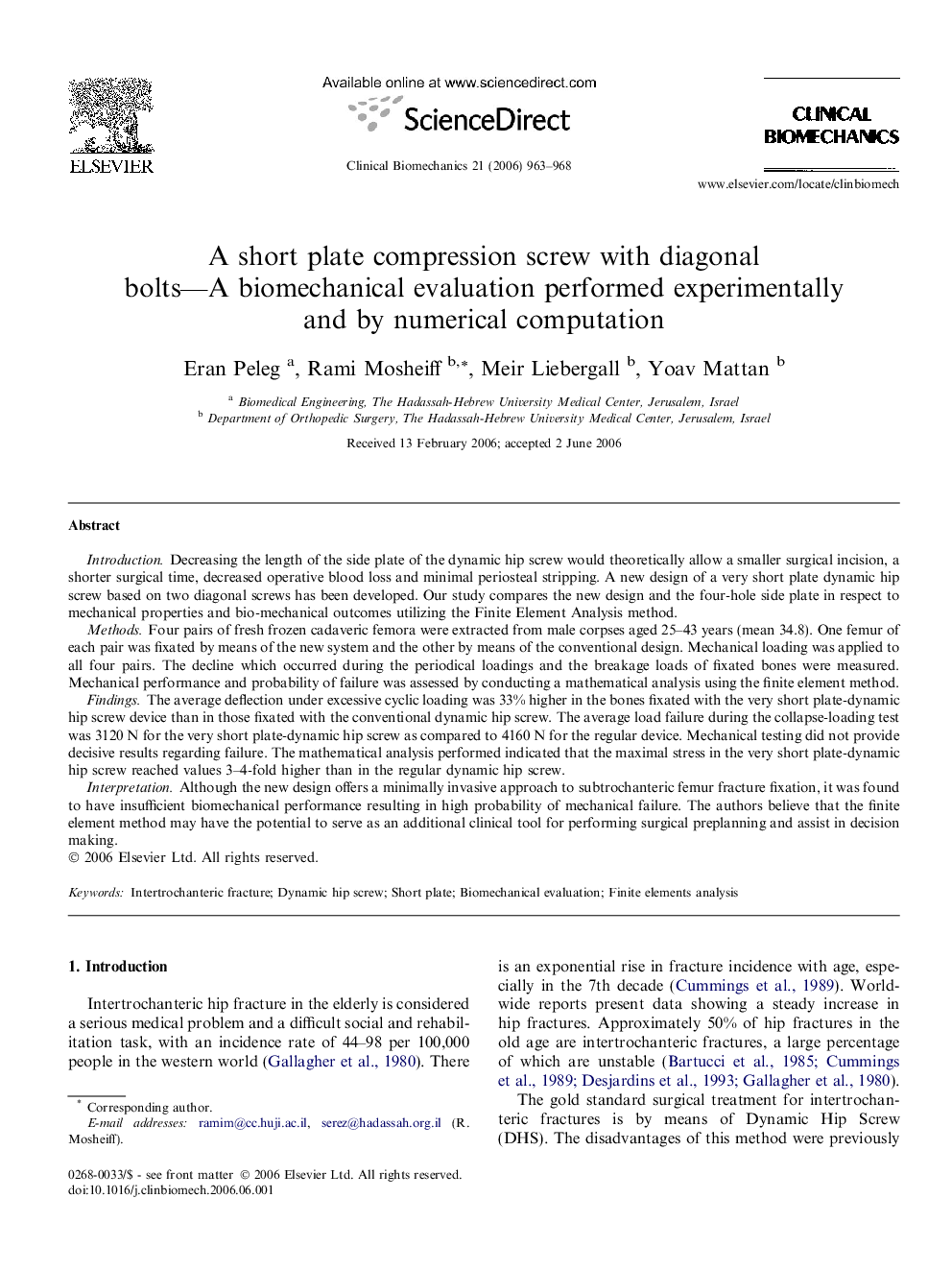| Article ID | Journal | Published Year | Pages | File Type |
|---|---|---|---|---|
| 4051351 | Clinical Biomechanics | 2006 | 6 Pages |
IntroductionDecreasing the length of the side plate of the dynamic hip screw would theoretically allow a smaller surgical incision, a shorter surgical time, decreased operative blood loss and minimal periosteal stripping. A new design of a very short plate dynamic hip screw based on two diagonal screws has been developed. Our study compares the new design and the four-hole side plate in respect to mechanical properties and bio-mechanical outcomes utilizing the Finite Element Analysis method.MethodsFour pairs of fresh frozen cadaveric femora were extracted from male corpses aged 25–43 years (mean 34.8). One femur of each pair was fixated by means of the new system and the other by means of the conventional design. Mechanical loading was applied to all four pairs. The decline which occurred during the periodical loadings and the breakage loads of fixated bones were measured. Mechanical performance and probability of failure was assessed by conducting a mathematical analysis using the finite element method.FindingsThe average deflection under excessive cyclic loading was 33% higher in the bones fixated with the very short plate-dynamic hip screw device than in those fixated with the conventional dynamic hip screw. The average load failure during the collapse-loading test was 3120 N for the very short plate-dynamic hip screw as compared to 4160 N for the regular device. Mechanical testing did not provide decisive results regarding failure. The mathematical analysis performed indicated that the maximal stress in the very short plate-dynamic hip screw reached values 3–4-fold higher than in the regular dynamic hip screw.InterpretationAlthough the new design offers a minimally invasive approach to subtrochanteric femur fracture fixation, it was found to have insufficient biomechanical performance resulting in high probability of mechanical failure. The authors believe that the finite element method may have the potential to serve as an additional clinical tool for performing surgical preplanning and assist in decision making.
